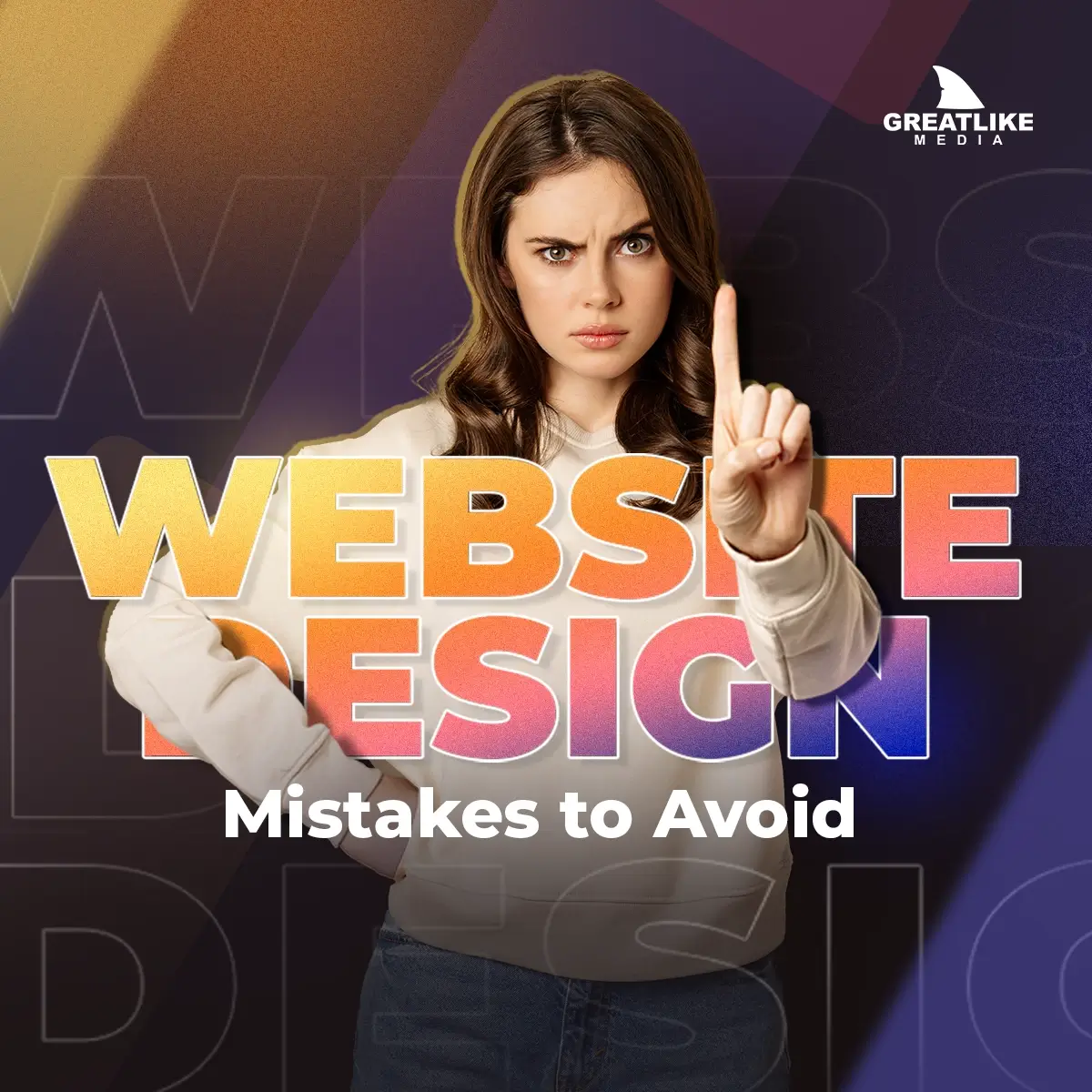
July 10, 2023
Website Design Mistakes to Avoid: Boost Your Conversion Rate
Ever been navigated to a website only to close it within two seconds? Did you ever enter a website only to leave it within a few seconds? What happened?
- Did it take longer to load?
- Did you feel the content was not relevant?
- Were you overwhelmed after entering the website?
The same can happen to your user if it is not sticky when they enter your website. The content, layout, fonts and colours significantly impact customer behaviour. You can make a stunning first impression with your website design. 94% of the perceptions are made when the user views your design.
Additionally, 75% of your credibility is associated with the website design. If your design is good, people will notice and follow your content.
However, businesses overlook certain specifics such as navigation, responsiveness and page load time. This can ruin the otherwise aesthetically designed website. You must avoid these mistakes before you launch the site to the users.
At Greatlike Media, one of the professional web design companies in Orange County, our team is more than aware of the top website mistakes you cannot make. We believe these errors cannot be undone. We have curated a list of all these mistakes to help you understand the design aesthetics and accessibility better.
1. Clarity and Simplicity
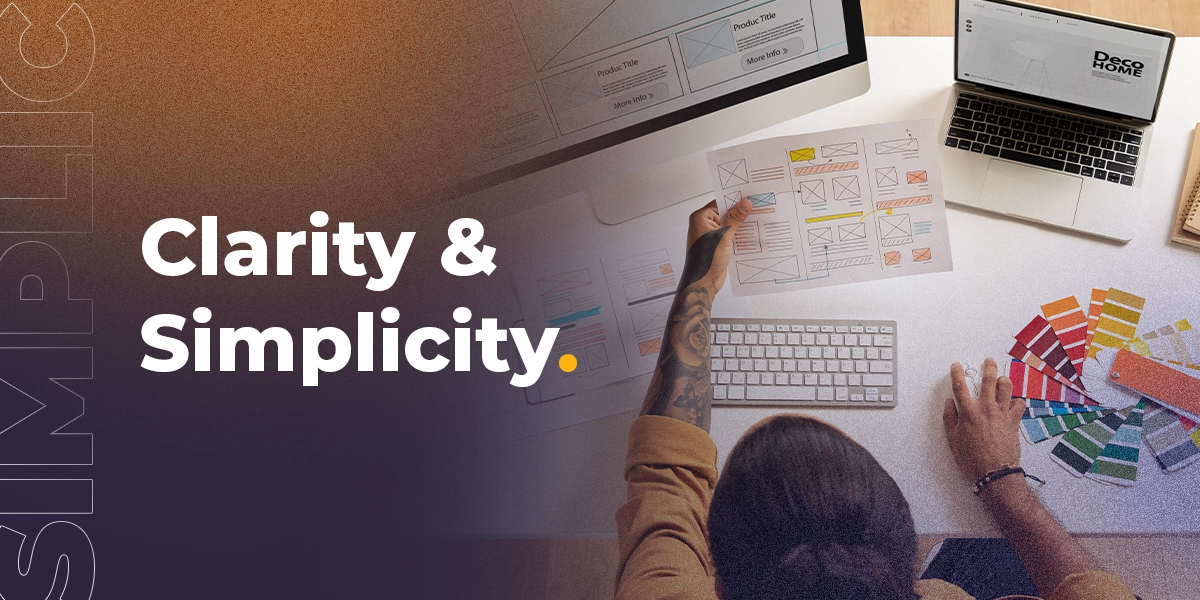
The message on your website should be clear and crisp for the users. If you are communicating the advantages of a particular product, the page should be designed to showcase these things carefully.
You should mention your contact details clearly if you plan to showcase them. Here are a few pointers on adopting clarity and simplicity in your layout.
What is the purpose of the message? What do you want to showcase with those lines? These questions would help you draw a clear and concise message for the website.
Don’t add extra material if you want to show the time and date for a webinar along with the key takeaways in the pop-up. Similarly, if you want a banner with a CTA and button, just add those details.
Too many messages can confuse users and make them bounce away from the website.
Layouts are important for design aesthetics. If your layout is cluttered or devoid of proper functional movement, it can cause an increased bounce rate.
Imagine visiting a content-heavy website that hasn’t segmented the communication properly. You will be reading a lot of text or viewing many images. However, you will come out with no learning. This can lead to attrition for the business.
- Streamlined navigation for easy user experience
When designing for simplicity, you should ensure the user can carry their existing learning curve to move forward. From scrolling down a page to browsing the website, they should find the entire use case simple. There shouldn’t be a learning curve that can cause friction in the experience.
2. Slow Page Load Speed
A slow loading speed can hamper the user’s experience. At least 53% of users in a survey expected that their website would load within 3 seconds. If that didn’t happen, they would revert from there to another place.
It can hamper your conversion or engagement rates, as people hate waiting for an image or page to load.
- Common Page Loading Mistakes to Avoid
There are a few page-loading mistakes that you must avoid when you are building a website.
- The inability to reduce the HTTP requests can impact the site’s time to load. It can also affect the performance.
- When you don’t reduce the size of the files, such as HTML or JavaScript, it can hamper the page loading time.
- If the server has performance issues or isn’t up to the mark, it may impact the loading time. You must invest in a good server or hosting solution.
If you haven’t been observing these aspects, it can hamper user experience rendering you incapable of meeting your conversion goals.
- Page Load Speed Optimization Strategies to Improve Performance
Here are a few strategies that can help improve the loading speed, thus extending spectacular performance.
- When you have the apt infrastructure to manage the website pages, you can deliver optimal speed. The hosting stack plays a pivotal role in ensuring fast speed.
- A content delivery network dramatically reduces the distance between the server and the end user. This way, the information will be loaded onto the website faster and reach the user on time.
- Make sure to reduce the HTTP requests that hamper the page speed. If you can work through the requested files and ensure proper caching, you might be able to reduce the requests and improve the speed.
- Database cleanup is an essential part of your optimization strategy. You can identify unused or garbage data and remove it from the database. With the newly attained space, you can get a better loading speed.
- You must also optimize the media library to enable better speed. For this purpose, you must clean up the extra files taking up much space. Remove the unused media as well.
- While you are working on optimizing, make sure to reduce the image file size. If a file exceeds 5MB, you must work on reducing its size. This will help you enhance your loading speed.
You can use several load-testing tools that help determine the actual speed versus the optimal speed for the page.
3. Lack of Responsive Design
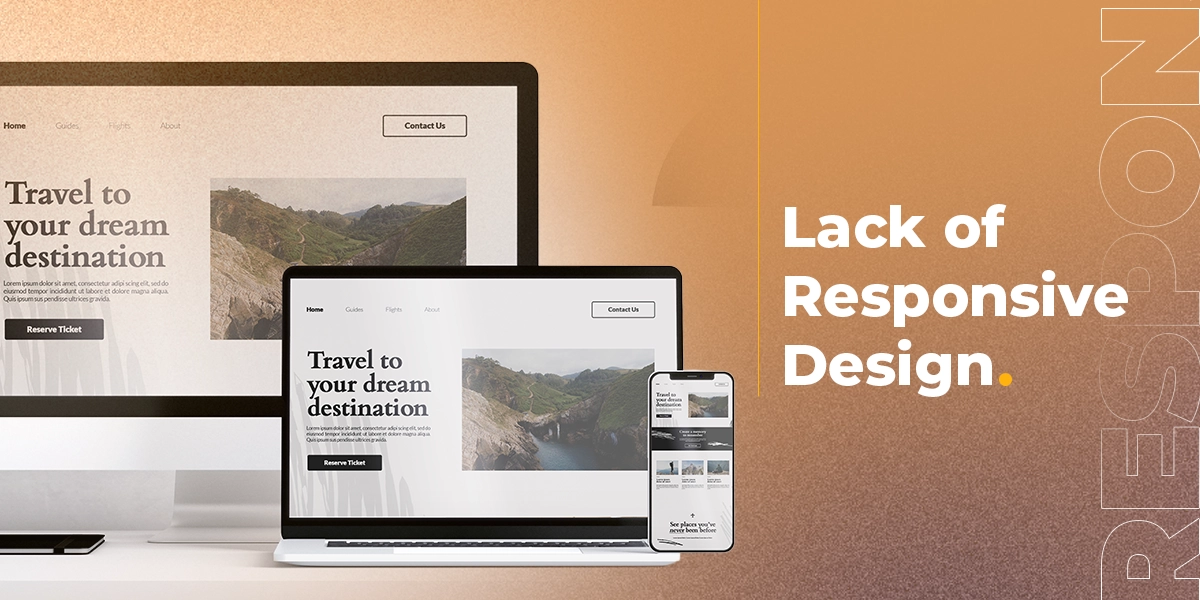
Imagine a use case where your user visited the website on their desktop. They wanted to read some information and accessed the site on their mobile. The site didn’t open properly on the mobile. They lost their interest, and there you lost a potential conversion.
Responsiveness can help you extend the same experience across devices. You can talk to your customer in the same way across devices, thus enabling them to take the decision. Irrespective of where your user accesses the website, they will get the exact experience from day one.
You may ask why a mobile-friendly website is important. This a perfectly valid question, considering you are creating a website. However, if you notice more people are accessing the business pages while on the go or when they are free and on mobile.
You must be ready for these users, attracting their attention and giving them complete information. With the increase in smartphone users, this is a segment you cannot miss. That’s why responsive designs are a must-have for websites.
Here are some of the mobile-friendly features and considerations for well-optimized sites.
- Think through the screen size before you begin slicing the website screen for the small device. The fonts and even the buttons should be designed for the small screen.
- The buttons and other tasks on the website page should be accessible to the users.
- When designing a mobile-friendly website, you should create a touch interface.
- Try simplifying the menus on your website for better access and easier movement.
- Moving back to the main page should be easier and more accessible for the users.
If you are planning to implement a responsive website design, here are all the techniques to incorporate
- Reduce the friction that can hamper the experience. Identify the goals for the particular page, and remove any friction in the process. You must determine ways to ensure the user doesn’t slow down while moving through the page.
- The mobile user will access your page via thumb. Ensure to make the page accessible via thumb. This would improve accessibility.
- The page layouts should be fluid and enhance the user’s movement. This fluidity would automatically allow the pages to resize themselves to suit the new device’s needs.
4. Intuitive and User-Friendly Navigation
User is happiest when they can use their existing learning curve to move around the website. However, if they need to check back again or need help browsing the site, they may leave sooner. Intuitive navigation is key.
However, many designers don’t incorporate fluidity in the website design, which leads to reduced conversions. Intuitive navigation includes a clean and highly organized menu structure. If you have a hierarchy defined, it will help the customer go to the places on the website that matter.
For instance, if you have a designated place for the About us, services and individual service page on your service business website, users can easily access them.
Here are a few navigation mistakes you must avoid.
- There are too many options in the main menu segment, which causes an overwhelmed user
- Being too creative in naming the pages, thus causing confusion and chaos
- Using drop-down menus too many times inside the menu, thus ruining the experience
- Having too many buttons within the menu
Check out the few basic tips for top-notch menu experiences
- Using breadcrumbs when creating user-friendly menus will allow the users to know where on the website they are at the moment
- The logical hierarchy will help you build the menu while keeping the user’s learning curve in mind
- Adding a search bar at the top will help your user look for the pages or contents they need
- Ensure you are developing for the mobile user.
5. Non-Intuitive User Interface (UI)
When your interface is too confusing, it can make the users stay away. They won’t be motivated to take the action needed. They would rather go to your competitor’s website and access their offerings.
The idea of one task per screen or to-the-point information can help the user move around faster. They would understand the page better and take the right actions.
Principles of Effective UI Design
- Consistency is the key to great interface design. If the design is consistent throughout the website, it can attract more attention.
- Be subtle with your most necessary feedback to avoid hampering their experience. For instance, if you want to showcase “wrong input”, make it visible without letting down the experience.
- Allow users to reverse their actions with greater ease so that they love interacting.
Tips for creating a user-friendly interface
- Ensure that you have created a simple and easy-to-use interface. Remove all the unnecessary elements from your design.
- Consistency in layouts throughout the website is crucial for better experiences.
- Use the appropriate colour and texture to improve attention
- Clarity and hierarchy in font sizes and their readability is equally important.
6. Poor Website Layout
As discussed earlier, a website’s layout is pivotal in ensuring your website users stay longer. What happens when you have too many elements on the web page? The user gets overwhelmed and shuts down your site. They may not stay longer and never come back.
Principles of Effective Website Layout
- Define the focus of your design and ensure you have created enough emphasis on it.
- Alignment and balance are two principles that can help improve the size, texture and composition within the layout design.
- There should be enough elements of contrast to help the user distinguish between two elements on the page.
- Repetition works well in grasping the attention and getting the users to stay longer. The repetition soothes their minds
Best Website Layout Design Practices
- When designing, think user-centric and ensure you are led by their needs to create the layout.
- Create a clean and clutter-free layout to connect with your audiences
- Use the whitespace appropriately so that the users don’t feel it is too much or too less
- Create the design for the different user types and their requirements.
7. Unclear Call-to-Action (CTA)
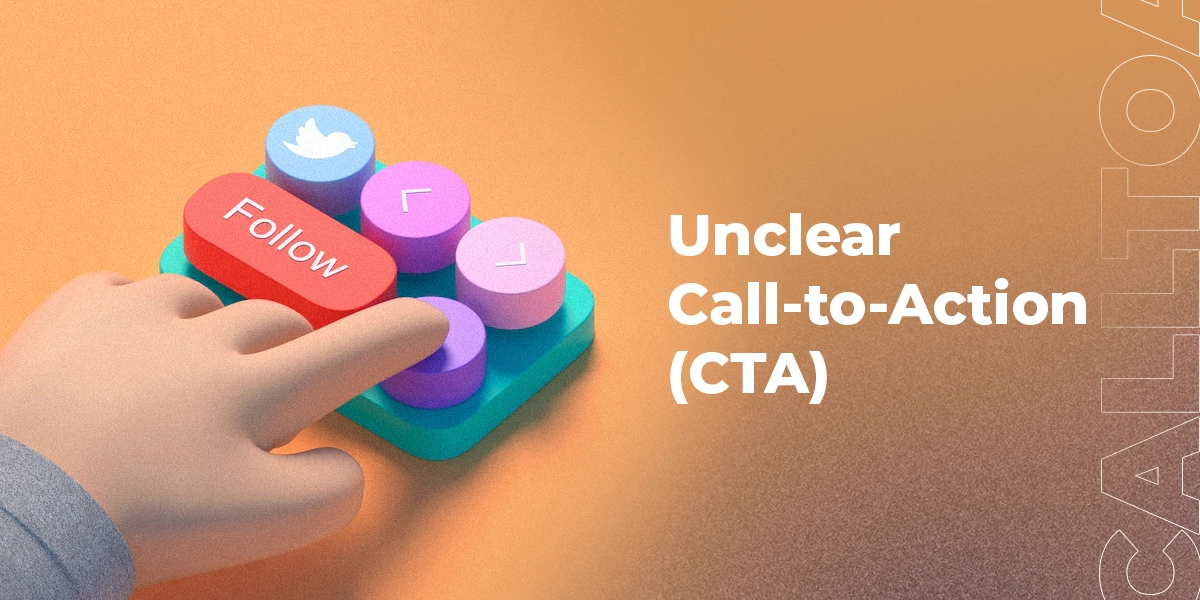
The layout and content will help the user reach the page’s bottom. However, they may not make the user take the actions required to boost conversions. You will lose the customer if you have too many misleading CTAs or inconsistent ones.
An unclear CTA is risky and can devalue your marketing efforts. Your conversion rate optimization is dependent on the clarity your CTA offers.
CTA Mistakes to Avoid
- Creating a vague and generic CTA may not make your customer take action.
- When you are not creating enough urgency among the user
- Your CTAs are almost similar to those created by your competitors
- Using many or fewer CTAs to make your users take the action
- Using an inappropriate tone for the CTA
Tips to Create Compelling CTAs
- Be clear about what you expect the user to do once they reach the bottom of the page.
- Create urgency with the appropriate verbs or action words
- Make sure you use different CTAs that are in sync with the platform’s needs
- Use the right fonts and boxes to make the CTA stand out.
Using compelling CTA is one of the best conversion rate optimization tips, which you must adopt to compel action and increase the bottom line.
8. Lack of Trust Elements
The user needs to trust you and your business to invest their time and efforts. Trust elements are important to gain conversions and make your users stay longer. There are several types of trust elements, such as customer references, reviews/ratings (eCommerce websites) and others that are important.
It will help the user know you are reliable and that your products/services can be trusted. It will bolster their faith and compel them to complete the purchase.
Here are a few trust elements that you must include in the website design:
- Testimonials: It shows what the customer feels about your product/service. It is the symbol of faith for your users
- Reviews: If you are a product website, reviews can make your customer wish to buy and try the product
- Security Badges: Whether in healthcare or retail, you walk on highly secure data. The security badges will allow your users to share their data with you.
Strategies to Build Trust
- Create a blog about your expertise, authority and dominance in the niche.
- Maintain consistency in the tone, language and colour schemes
- Be transparent about the numbers, behind-the-scenes and even the product attributes. 100% transparency will gain you maximum conversions.
9. Simplified Forms and Checkout Process
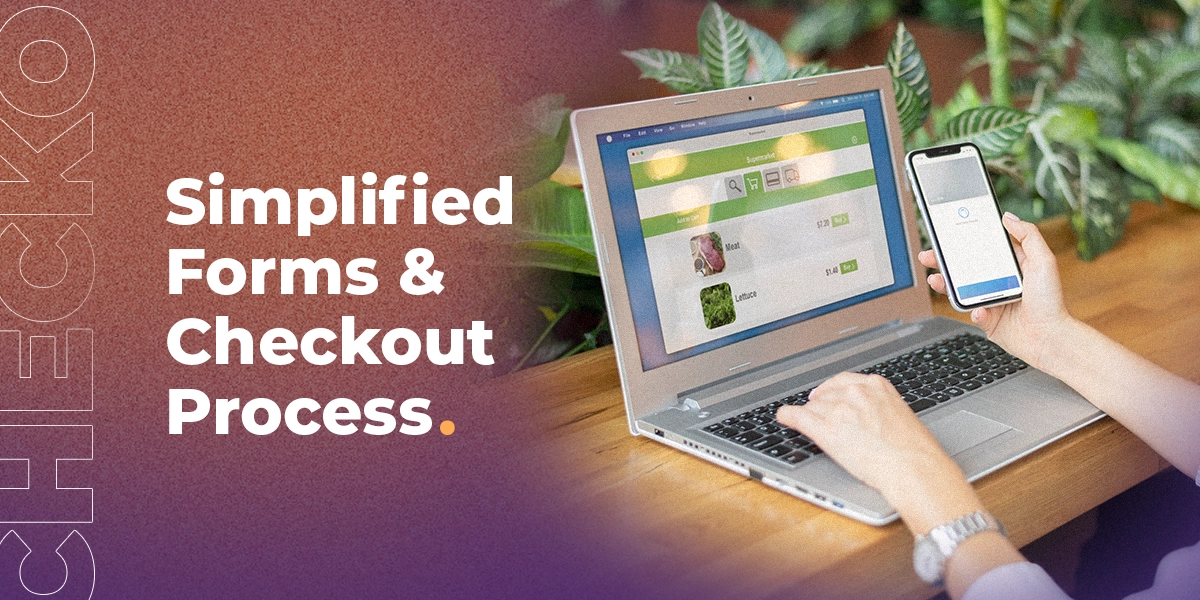
Imagine a customer signing in from the mobile. When they fill in details and use a content-heavy form, they might bounce away midway. You might not be able to convert them owing to the long form.
At the same time, if the checkout process is complicated and too long, you will experience cart abandonment.
Here are a few tips to simplify the forms and ensure a seamless checkout process:
- Ensure adding minimum and precise form fields that can help you capture the customer details. Make sure you allow the users to input seamlessly from the mobile devices.
- A streamlined and defined checkout process is important. For instance, the user should be able to checkout as a guest. You should send them the emails through the checkout process. A single-page checkout is a great idea.
- Make sure to tell the user about the progress during checkout. Keeping the user informed will let them know that there is movement.
- To make things easier for mobile users, allow auto-fill options.
10. Poor Readability and Typography
One of the key put-offs for website users is poor readability. If the text or image is not legible on mobile or other devices, it may ruin the experience.
Moreover, if the text is not readable on any device or the text size is too small, it can hamper the user experience. Many designers tend to make this mistake, which costs them heavily. You should invest in the right text size and typography to avoid bounce rates and gain more conversions.
Here are a few tips that can help improve your typography and readability :
- Incorporate a type scale that can help you create harmony in font sizes. It will help you plan the text better
- Select the line length for the particular section for better readability
- Create a single typeface and use it throughout the website. It will help plan the readability better.
- Create the appropriate line spacing and paragraph alignment to improve readability.
11. Overwhelming or Distracting Visuals
Visuals are an integral part of your website. Visuals can compel the user’s attention if you want to showcase your products, behind-the-scenes work or your success stories.
However, most designers make the mistake of adding too many visuals. That can interfere with user activity and diminish the experience. You will notice that too much text or images can increase the bounce rate.
It is important to add a relevant and precise number of visuals that compel the user’s attention. At the same time, you must optimize them for conversions.
Tips to Add Visual Elements and Optimize Them :
- Always add relevant and important visuals that convey the message on the page
- Choose high-resolution images or videos to grab the attention of the users
- Add alt-text for every visual that you plan to include on the website
- Include keywords for the image to increase discoverability and optimize them for search engines using SEO strategies for higher conversions
- Ensure your images are mobile-responsive for better accessibility
12. Lack of Social Proof
Say someone has purchased a product from your website and loved it. But how can people trust this statement till there is enough proof backing it? Social proof is an important element of your website design. You might want to consider building it to drive more conversions seriously.
More people will buy when people tag your business on social media to claim its effectiveness. They might make an informed decision when they see positive reviews on marketplaces. As a service business, your case studies can showcase how good your business is.
There is a wide range of social proof that you can incorporate on your website. Ratings, product reviews, social media tags, and customer reviews are just a few that we can name.
We believe leveraging social proof in incorporating a reliable website design is very important. We have curated a few tips that should help.
Tips to improve social proof on the website :
- Get your customers to shoot short videos and add them to your website and other assets for conviction.
- Embed your social media handles to the website for users to connect with you.
- Use numbers to highlight your client’s achievements with your service or solution.
- Show user-generated content that helps the user believe you are trustworthy.
13. Broken Links and Errors
How would you feel if you were hit by an error when you arrived on a page? Imagine reaching a page hoping to read the content and learn something, only to be hit by a broken link. It can ruin your experience. You might not even remember the website a second longer.
That happens when people are met with broken links or errors on your website. They don’t register on your website or want to know what you offer. The broken link is enough to put them off.
Websites audits are important to ensure you have a completely accessible design. Not looking into the links or checking the website for issues could be considered the biggest design mistake.
Here are a few error-handling best practices for website designers :
- Audit the website regularly and check for issues through the pages.
- Make sure to create an error page if the user reaches a broken link or a lost page
- Ensure to map the links properly for better connectivity
14. Accessibility and Inclusivity
It has become important for businesses to ensure everyone can interact with their website without friction. Whether they are using assisted devices, voice assistants or other forms, they should be able to access freely.
The inclusivity of people with different types of disabilities is an important consideration in digital formats. Your images, text and videos should be open to all device forms and types.
When you are designing the website, you can make the interactions inaccessible. You can even think through a form for a certain user persona. This can limit inclusivity and lead to potential abandonments.
Your website should follow the compliance guidelines set by ADA (American Disabilities Act and WCAG (World Content Accessibility Guidelines).
According to WCAG, your website design should be operable, robust, understandable, and perceivable. Incorporating these compliances will make your website accessible to a wider audience.
15. Analytics and Testing
Businesses must keep track of their user metrics. You should know the visits, conversions, bounce rates, and other metrics to improve/optimize your website. Make sure to integrate Google Analytics on all pages. This would help track the site page metrics and monitor the conversions.
A detailed analysis will also help you realize which aspects led to the bounce rate and what factors contributed to the conversion. These things will help update the website. You will get a lot of insights into the pages when using Google Analytics. These insights can help you make informed decisions and optimize the website.
While designing the page, conduct an A/B testing with the target market. You will know which page is likely to garner more conversions. This approach would help you plan a well-defined layout and interactive experience.
Let’s answer a few frequently asked questions.
FAQ
1. What makes a bad website design?
A cluttered layout, non-responsive page design and hidden menus can impact the design quality. It contributes to making your website design look poor and full of friction.
2. How would I know if my website design is good?
If the user can locate their pages, easily navigate, read through the text and access the contents, it is a good web design.
3. Why choose mobile-friendly web design for Orange County company for your design needs?
They have the infrastructure, experience, and expertise to deliver intuitive and interactive solutions. They are well aware of your needs, can ensure minimal design errors and contribute towards optimized solutions.
4. What is conversion rate optimization?
The detailed process of increasing the percentage of conversions for a business from their mobile app or website is termed conversion rate optimization. Using CRO, you will identify the elements on a website or application that has maximum chances of conversion. To validate your ideas, you must opt for A/B testing.
5. Why conversion rate optimization is important?
By implementing the apt conversion rate optimization tips, you can enhance and maximize the returns by increasing the investment. Check why you should invest in CRO for your business.
- you will know your customers better, and learn what makes them convert
- It will help reduce the acquisition cost as you would maximize revenue from visitors and customers
- You can optimize your conversions from the existing traffic and leads with the right elements on the website
Conclusion
A good web design is an important part of your marketing or sales strategy. If you want to increase the user count or work towards retention, your design strategy should be top-notch. With fewer mistakes and a website aligned with the goal, you will reach your target customers and convert faster.
Greatlike Media will contribute towards your goal achievement with our expertise and experience. As a leading web design service provider in orange county, we have been crafting highly interactive websites. Our portfolio will show you how we cater to design accessibility and usability. Connect with our team to create a quality website for your business.
 Back to main posts
Back to main posts
